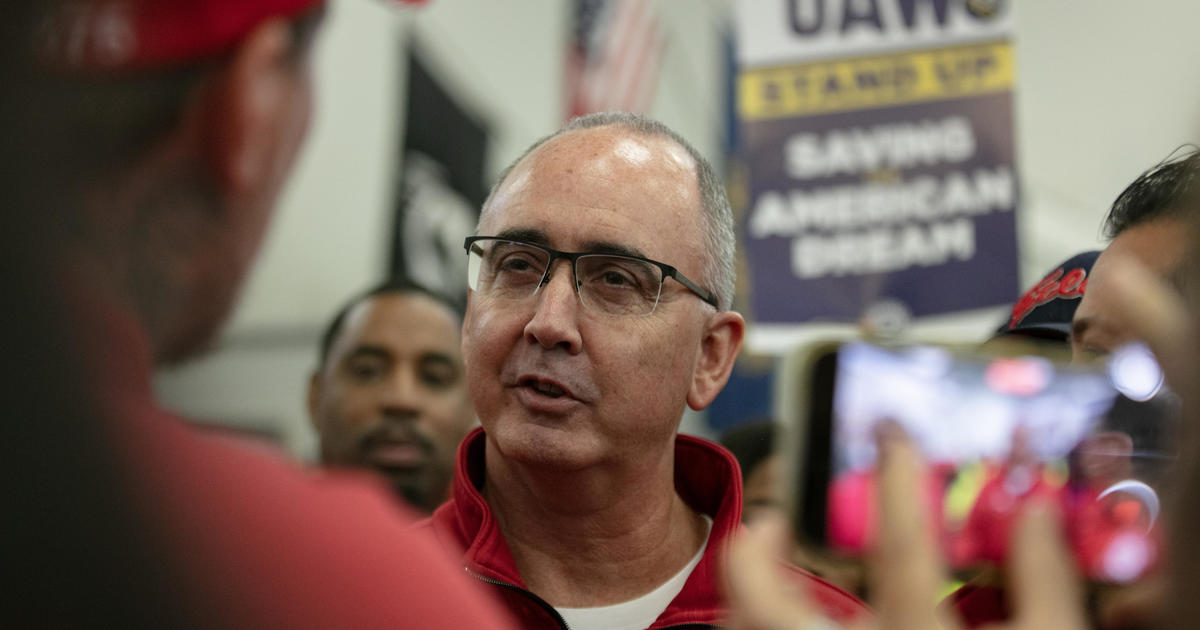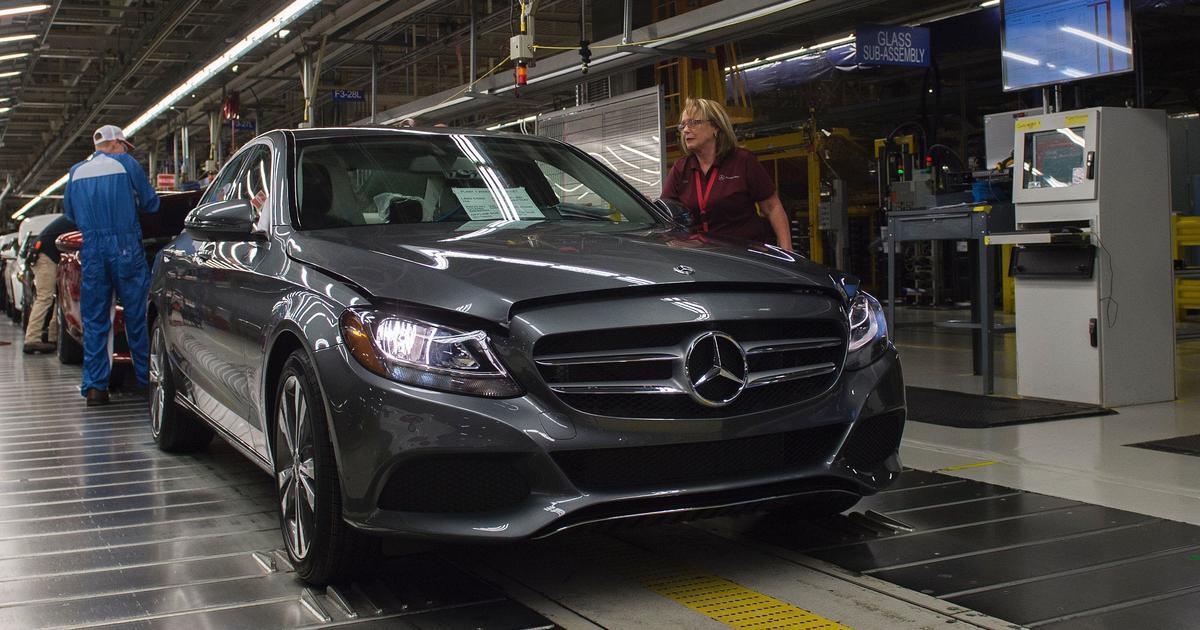Oil Platform Explosion In Gulf
An oil platform exploded and caught fire Thursday off the Louisiana coast, sending its 13 crew members into the ocean, where they waited until they were rescued.
All 13 workers were later discharged Thursday afternoon from Terrebonne General Medical Center in Houma, La., a hospital official told CBS News.
Officials are investigating to determine what sparked the fire on the rig, called Vermilion 380, b>CBS News Correspondent Don Teague reports from Houma, La.
Louisiana Gov. Bobby Jindal said the company told him the fire began in 100 barrels of light oil condensate, but officials did not know yet what sparked the flames.
The Coast Guard previously said a mile-long oil sheen was spreading into the Gulf of Mexico but later backed off its earlier report.
Coast Guard Cmdr. Cheri Ben-Iesau said Thursday afternoon that crews were unable to confirm the oil sheen. The Coast Guard says platform owner reported a sheen about a mile long and 100 feet wide. But the company has said in a statement that an initial flyover didn't find an oil spill.
Ben-lesau says the fire on the platform has been put out.
The company that owns the platform, Houston-based Mariner Energy, did not know what caused the blast, which was reported by a helicopter flying over the area. Seven Coast Guard helicopters, two airplanes and three cutters were dispatched to the scene.
Vermilion 380 is not a drilling rig but an oil and natural gas production platform anchored to the sea floor in 340 feet of water, Teague reports. The platform ordinarily pumps 1,400 barrels of oil per day to shore from seven active wells.
Jindal said Mariner officials told him the seven active production wells were shut down shortly after the fire broke out.
A Coast Guard captain confirmed to reporters early Thursday evening that Mariner has shut down the platform.
"The company monitors each of those wells, and their data shows there's not flow through them," the captain said.
The captain also said that boats and aircraft at the site of the blast cannot see an oil sheen.
The platform is in about 340 feet of water and about 100 miles south of Louisiana's Vermilion Bay. Its location is considered shallow water, much less than the approximately 5,000 feet where BP's well spewed oil and gas for three months after the April rig explosion.
"Mariner has notified and is working with regulatory authorities in response to this incident. The cause is not known, and an investigation will be undertaken," the company said in a statement.
Responding to any oil spill in shallow water would be much easier than in deep water, where crews depend on remote-operated vehicles access equipment on the sea floor.
A homeland security update obtained by The Associated Press said the platform was producing 58,800 gallons of oil and 900,000 cubic feet of gas per day. The platform can store 4,200 gallons of oil.
White House press secretary Robert Gibbs said the administration has "response assets ready for deployment should we receive reports of pollution in the water," Gibbs said.
Environmental groups and some lawmakers said the incident showed the dangers of offshore drilling, and urged the Obama administration to extend a temporary ban on deepwater drilling to shallow water, where this platform was located.
"How many accidents are needed and how much environmental and economic damage must we suffer before we act to contain and control the source of the danger: offshore drilling?" said Rep. Frank Pallone, a New Jersey Democrat.
Mike Gravitz, oceans advocate for Environment America, said President Obama "should need no further wake-up call to permanently ban new drilling."
All 13 of the platform's crew members were rescued from the water. They were found huddled together in life jackets.
"These guys had the presence of mind, used their training to get into those gumby suits before they entered the water," Coast Guard spokesman Chief Petty Officer John Edwards said. "It speaks volumes to safety training and the importance of it because beyond getting off the rig there's all the hazards of the water such as hypothermia and things of that nature."
The captain of the boat that rescued the platform crew said his vessel was 25 miles away when it received a distress call Thursday morning from the platform.
The Crystal Clear, a 110-foot boat, was in the Gulf doing routine maintenance work on oil rigs and platforms. When Capt. Dan Shaw arrived at the scene of the blast, the workers were holding hands in the water, where they had been for two hours. They were thirsty and tired.
"We gave them soda and water, anything they wanted to drink," Shaw said. "They were just glad to be on board with us."
Shaw said the blast was so sudden that the crew did not have time to get into lifeboats. They did not mention what might have caused the blast.
"They just said there was an explosion, there was a fire," Shaw said. "It happened very quick."
Jindal met with some of the survivors. He would not identify them except to say most were from Louisiana.
A company report said the well was drilled in the third quarter of 2008.
According to Interior Department data, Vermilion 380A run by Mariner is manned 24 hours a day. The "install date" of the platform structure is listed as Jan. 1, 1980.
There are about 3,400 platforms operating in the Gulf, according to the American Petroleum Institute. Together they pump about a third of the America's domestic oil, forming the backbone of the country's petroleum industry.
Platforms are vastly different from oil rigs like the Deepwater Horizon. They are usually brought in after wells are already drilled and sealed.
"A production platform is much more stable," said Andy Radford, an API expert on offshore oil drilling. "On a drilling rig, you're actually drilling the well. You're cutting. You're pumping mud down the hole. You have a lot more activity on a drilling rig."
In contrast, platforms are usually placed atop stable wells where the oil is flowing at a predictable pressure, he said. A majority of platforms in the Gulf do not require crews on board.
Many platforms, especially those in shallower water, stand on legs that are drilled into the sea floor. Like a giant octopus, they spread numerous pipelines across the sea floor and can tap into many wells at once.
Platforms do not have blowout preventers, but they are usually equipped with a series of redundant valves that can shut off oil and gas at different points along the pipeline.
Numerous platforms were damaged during hurricanes Katrina and Rita. The storms broke pipelines and oil spilled into the Gulf. But the platforms successfully kept major spills from happening, Radford said.
"Those safety valves did their job," he said.
Federal authorities have cited Mariner Energy and related entities for 10 accidents in the Gulf of Mexico over the last four years, according to safety records from the Bureau of Ocean Energy Management, Regulation and Enforcement.
The accidents range from platform fires to pollution spills and a blowout, according to accident-investigation reports from the agency formerly known as the Minerals Management Service.
In 2007, welding sparks falling onto an oil storage tank caused a flash fire that slightly burned a contract worker. The Minerals Management Service issued a $35,000 fine.
Mariner Energy Inc. focuses on oil and gas exploration and production in the Gulf. In April, Apache Corp., another independent oil company, announced plans to buy Mariner in a cash-and-stock deal valued at $3.9 billion, including the assumption of about $1.2 billion of Mariner's debt. That deal is pending.
On Friday, BP was expected to begin the process of removing the cap and failed blowout preventer, another step toward completion of a relief well that would put a final seal on the well. The Deepwater Horizon exploded April 20, killing 11 people and setting off a three-month leak that totaled 206 million gallons of oil.
© MMX, CBS Interactive Inc.. All Rights Reserved. This material may not be published, broadcast, rewritten, or redistributed. The Associated Press contributed to this report.



